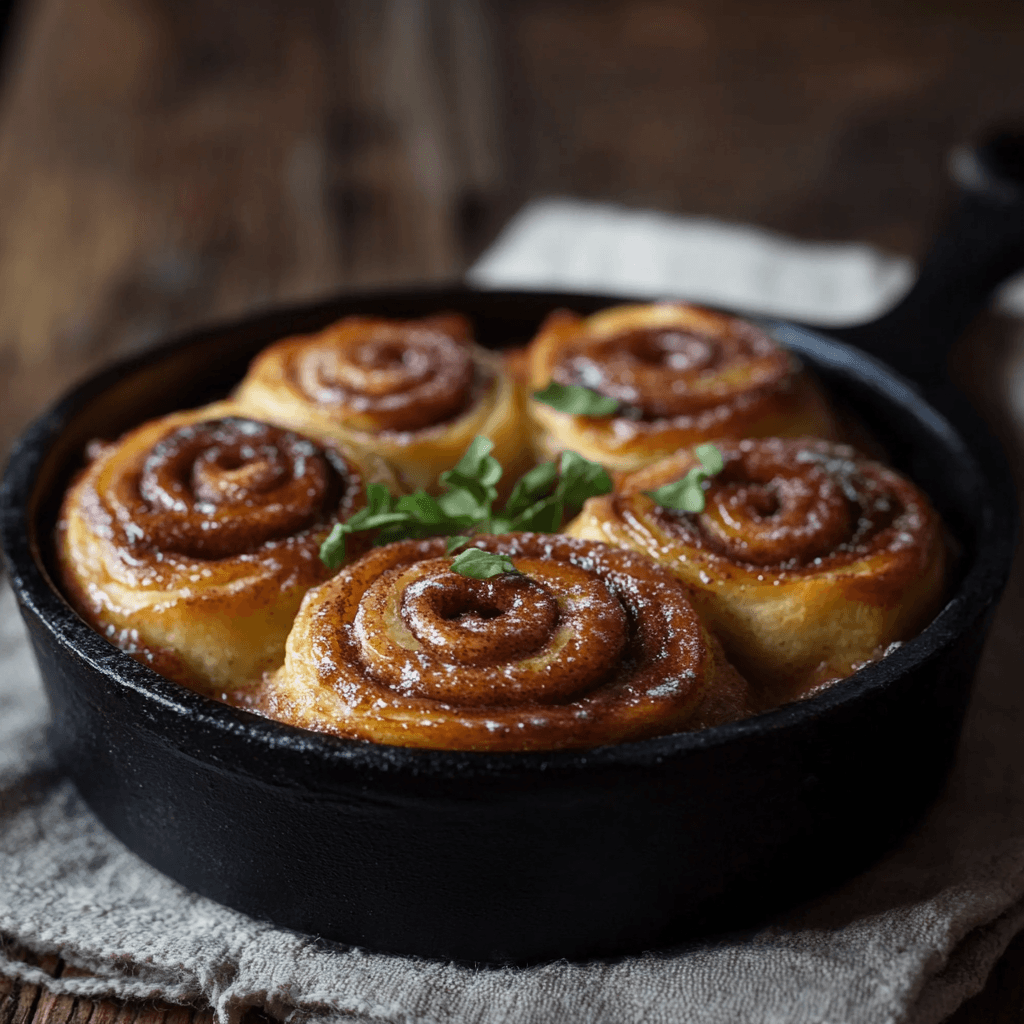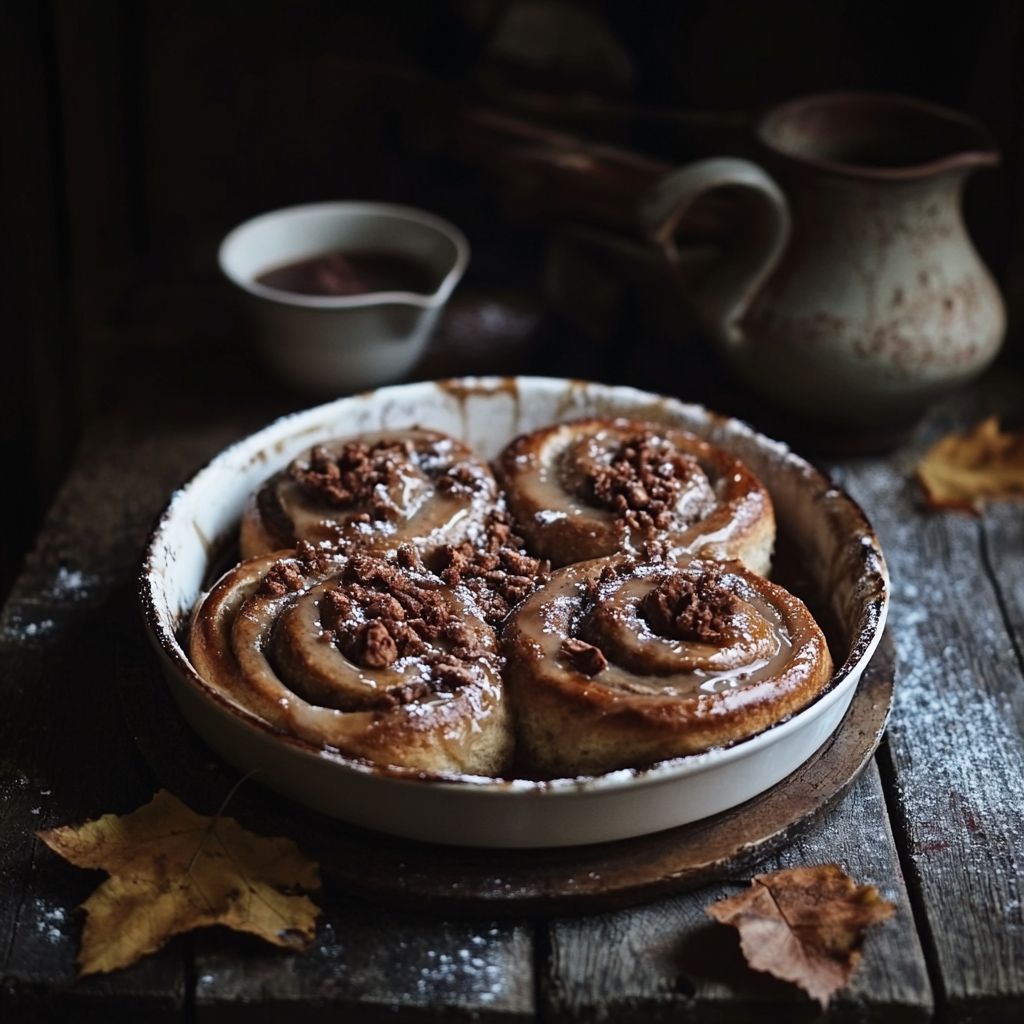Introduction to Cinnamon Rolls
If you’re searching for the best cinnamon roll recipe, you’ve come to the right place. These soft, fluffy rolls with their sweet cinnamon filling and creamy glaze are a classic treat loved worldwide. Perfect for breakfast, dessert, or any special occasion, this guide will teach you everything you need to know to make irresistible homemade cinnamon rolls, complete with expert tips and variations.
Why Cinnamon Rolls Are Loved Worldwide
People love cinnamon rolls because they are sweet, soft, and comforting. They are perfect for breakfast, dessert, or a snack with coffee. Moreover, the warm smell of cinnamon and sugar baking in the oven makes them hard to resist. Additionally, cinnamon rolls can be made in many styles, so they suit various tastes and occasions.
Ingredients Overview
Key Ingredients for Making the Best cinnamon roll recipe
To make the best cinnamon rolls, you need a few basic ingredients:
- Flour: All-purpose flour is common, but bread flour works well if you want a chewier roll.
- Yeast: This makes the dough rise and creates its fluffy texture.
- Milk: Whole milk keeps the dough soft and rich.
- Butter: Unsalted butter gives a creamy flavor without extra salt.
- Sugar: White sugar adds sweetness to the dough, while brown sugar makes the filling rich and caramel-like.
- Eggs: Eggs add structure and richness to the dough.
- Cinnamon: This spice is the key ingredient in the filling.
- Cream Cheese: It makes the icing tangy and balances the sweetness.
Substitute Ingredients for Dietary Needs
If you need to adjust for dietary needs, there are several simple swaps. For example, plant-based milk like almond or oat milk can replace dairy milk for a vegan option. Similarly, use vegan butter and a flaxseed mixture instead of eggs. For gluten-free rolls, substitute regular flour with a gluten-free blend. If you want less sugar, natural sweeteners like stevia or monk fruit can work as well.
Choosing the Right Tools
Essential Baking Tools for Cinnamon Rolls
To make cinnamon rolls, you’ll need some tools:
- Mixing Bowls: Use these for combining ingredients and letting the dough rise.
- Measuring Cups and Spoons: These ensure you use the right amount of each ingredient.
- Rolling Pin: This helps you roll the dough evenly.
- Baking Dish or Pan: A dish with high sides is best for even baking.
- Thermometer: Use it to check the temperature of liquids for activating yeast.
Optional Tools for Better Results
In addition to the basics, a few extra tools can make things easier. For instance, a stand mixer with a dough hook can save time when kneading. A pastry brush helps spread butter on the dough evenly, and a bench scraper makes cutting the dough neat and simple. Lastly, parchment paper keeps the rolls from sticking and makes cleanup quicker.
Step-by-Step Dough Preparation
Understanding Yeast and Its Role in Baking
To begin, it’s important to understand why yeast is used. Yeast makes the dough rise by creating tiny air bubbles. To activate yeast properly, use warm water or milk, around 105–110°F (40–43°C). If the liquid is too hot, it can kill the yeast, so be careful. Once activated, the yeast helps the dough grow soft and fluffy.
Tips for Kneading and Proofing Dough Perfectly
Once the yeast is active, the next step is kneading. Knead the dough until it feels smooth and stretchy. This step is important because it helps build the structure needed for fluffy rolls. After kneading, let the dough rest and rise in a warm spot. While it is proofing, cover it with a damp towel so it doesn’t dry out. When the dough has doubled in size, it is ready to roll out.
Crafting the Perfect Cinnamon Roll
Crafting the Perfect Filling
The Ideal Cinnamon-Sugar Ratio
The filling is one of the secrets to achieving the best cinnamon roll recipe. With the right balance of cinnamon and sugar, your rolls will be rich and flavorful. For a twist, consider adding ingredients like nuts, raisins, or chocolate chips to take your homemade cinnamon rolls to the next level.
Adding Flavor Twists: Nuts, Raisins, or Chocolate
To make your cinnamon rolls more exciting, consider adding extra ingredients:
- Nuts: Chopped pecans or walnuts add crunch and a nutty flavor.
- Raisins: Soak raisins in warm water to soften them before adding to the filling.
- Chocolate Chips: For a rich twist, sprinkle mini chocolate chips over the filling.
These additions not only enhance the flavor but also create texture for a more indulgent treat.
Rolling and Shaping Techniques

Best Practices for Rolling Out the Dough
To roll out the dough evenly:
- Lightly flour your surface and rolling pin to prevent sticking.
- Roll the dough into a rectangular shape, about ¼ inch thick, ensuring uniform thickness.
- Work gently to avoid over-stretching the dough, which can lead to uneven rolls.
Tips for Cutting Even-Sized Rolls
Use a sharp knife or dental floss to cut the rolls cleanly. For consistent sizes:
- Mark the dough with a ruler before cutting.
- Cut slowly and evenly, ensuring each roll is the same width (typically 1 to 1½ inches).
Dental floss works best for soft dough as it avoids squishing.
Achieving a Fluffy Texture
Second Proofing: Why It Matters
A fluffy texture is what sets the best cinnamon roll recipe apart from the rest. To achieve this, proper kneading and proofing are essential. Be sure to let the dough rise until it doubles in size, and avoid overworking it, as that can lead to dense results. These tips will ensure your cinnamon rolls turn out light and airy every time.
Avoiding Common Mistakes That Lead to Dense Rolls
To ensure fluffy rolls:
- Avoid over-kneading, which can make the dough tough.
- Be patient during proofing and allow enough time for the dough to rise fully.
- Do not use expired yeast, as it won’t activate properly.
The Ideal Baking Process
Optimal Oven Settings and Baking Times
Baking is a critical step in the best cinnamon roll recipe. By preheating your oven to the right temperature and checking the rolls for doneness, you can avoid common pitfalls like overcooking or undercooking. Use a toothpick to test the center roll to ensure it’s baked through without becoming dry.
How to Prevent Overcooking or Undercooking
To avoid dry or doughy rolls:
- Check the rolls 5 minutes before the recommended baking time ends.
- Insert a toothpick into the center roll; if it comes out clean, they’re done.
- Cover the rolls with foil halfway through baking if the tops brown too quickly.
Crafting the Perfect Glaze
Classic Cream Cheese Glaze Recipe
A creamy glaze is the finishing touch on the best cinnamon roll recipe. Whether you prefer a classic cream cheese glaze or a unique twist like citrus or chocolate, the right topping can elevate your cinnamon rolls to a bakery-quality treat.
For a traditional glaze:
- 4 oz (115g) cream cheese, softened
- 1 cup (120g) powdered sugar
- 2 tbsp (30ml) milk or heavy cream
- 1 tsp vanilla extract
Mix until smooth and drizzle over warm rolls for the best results.
Alternative Glaze Ideas for Unique Flavors
- Maple Glaze: Replace vanilla with maple syrup for a warm, rich flavor.
- Citrus Glaze: Add orange or lemon zest and juice for a bright, tangy twist.
- Chocolate Glaze: Melt chocolate with a splash of cream for a decadent topping.
Decorating and Serving Tips
Creative Ways to Present Cinnamon Rolls
Serve cinnamon rolls in creative ways to elevate their appeal:
- Arrange them in a circle to mimic a wreath for festive occasions.
- Sprinkle with powdered sugar or drizzle additional glaze for extra flair.
- Add edible flowers or fruit slices for an elegant touch.
Pairing Cinnamon Rolls with Beverages
Cinnamon rolls pair wonderfully with:
- Coffee: The bitterness balances the sweetness.
- Tea: Spiced chai or black tea complements the cinnamon flavor.
- Milk: A glass of milk enhances the creamy and sugary taste.
Troubleshooting Common Problems
Why Did the Dough Not Rise?
If your dough doesn’t rise, it may be due to:
- Yeast that is expired or not activated.
- Liquid that is too hot or too cold for the yeast.
- Proofing in a space that is too cool or drafty.
How to Fix Uneven Baking
To ensure even baking:
- Rotate the pan halfway through the baking process.
- Space the rolls evenly in the pan to allow uniform heat circulation.
What’s the best way to store leftovers?
Keep leftovers in an airtight container in the fridge for up to 4 days. Reheat in the microwave or oven until hot and bubbly. For food safety tips, refer to USDA guidelines on leftovers .
Storing and Reheating Tips
To keep your homemade cinnamon rolls tasting fresh, follow these storage tips. Airtight containers are essential for maintaining their softness, and proper reheating ensures they retain their moisture. These steps will help preserve the perfection of your best cinnamon roll recipe.
Best Practices for Keeping Cinnamon Rolls Fresh
Store rolls in an airtight container at room temperature for up to 2 days. For longer storage, wrap them tightly in plastic wrap and freeze for up to 3 months.
How to Reheat Cinnamon Rolls Without Drying Them Out
To reheat:
- Microwave individual rolls for 15–20 seconds, covered with a damp paper towel.
- Warm in an oven at 300°F (150°C) for 10 minutes, covered with foil to retain moisture.
Variations of Cinnamon Rolls
Savory Cinnamon Rolls
For a savory twist, replace the sweet filling with ingredients like cheese, garlic, and herbs. These make a perfect snack or side dish.
Vegan and Gluten-Free Options
For vegan rolls, use plant-based milk, butter, and flaxseed as an egg replacement. For gluten-free rolls, use a gluten-free flour blend with xanthan gum for elasticity.
Enhancing the “Best Cinnamon Roll Recipe” Article with Internal Links
To improve the “best cinnamon roll recipe” article, consider linking to related content on the site. For example, a section discussing alternative glaze ideas for unique flavors could link to “The Best Cinnamon French Toast Recipe for a Perfect Morning” to showcase another cinnamon-flavored breakfast treat. Similarly, a mention of creative ways to present cinnamon rolls could tie in with “The Ultimate French Brioche French Toast Recipe for a Decadent Breakfast” for ideas on luxurious presentation. Lastly, if the article explores vegan options, it could point readers to “The Ultimate Guide to Making Fluffy Vegan Pancakes” to align with plant-based alternatives.
Conclusion and Final Thoughts
The joy of baking the best cinnamon roll recipe comes not only from the delicious results but also from the process of creating something special. With every batch, you gain experience and confidence, allowing you to perfect your technique and explore exciting variations. Whether you enjoy your rolls as a classic treat or experiment with unique flavors, share your creations with friends and family to spread the warmth and sweetness of this beloved recipe.





